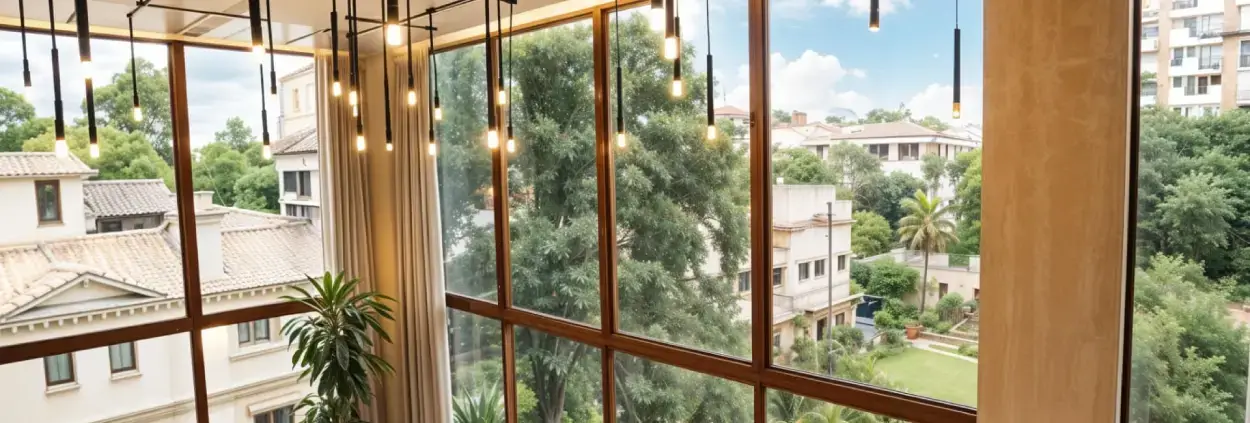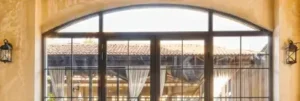
uPVC & Aluminium vs Wooden Windows: Pros and Cons Compared
When choosing the right windows for your home, the decision often comes down to three popular materials: uPVC, aluminium, and wood. Each option offers its own set of benefits and drawbacks in terms of cost, maintenance, aesthetics, durability, and performance.
In modern Indian homes, whether high-rise apartments in cities or standalone houses in smaller towns, windows are not only an aesthetic element but also play a critical role in insulation, ventilation, and security.
In this article, we break down the pros and cons of each window material to help you make an informed decision, especially when evaluating aluminium windows, their design versatility, pricing, and sliding options.
Aluminium Windows
Pros of Aluminium Windows
1. High Durability and Strength
Aluminium windows are known for their robust frames and resistance to corrosion. Unlike wood, they don’t warp or rot, and unlike uPVC, they can withstand higher wind loads, making them ideal for coastal areas and high-rise buildings.
2. Slim Profiles with Modern Appeal
If you’re looking for a contemporary look, aluminium windows design offers ultra-slim profiles that allow for larger glass panels and more natural light. Their sleek look complements minimalist and modern homes.
3. Versatile Designs
Aluminium frames support various window types, including aluminium windows sliding, casement, tilt-and-turn, and fixed options. Custom designs are easily achievable without compromising on strength.
4. Low Maintenance
They require minimal upkeep; occasional cleaning with water and a mild detergent is enough to keep them looking new. No repainting or refinishing is necessary.
5. Fire Retardant and Pest Resistant
Being non-combustible and immune to termites or other pests, aluminium frames offer an extra layer of safety and longevity in tropical Indian climates.
Cons of Aluminium Windows
1. Thermal Conductivity
Aluminium is a good conductor of heat, which can affect insulation. However, modern aluminium windows now include thermal insulation technology to improve energy efficiency.
2. Cost Variation
While aluminium offers a premium appearance and durability, aluminium windows price can be higher than uPVC options. However, the long-term value often justifies the initial investment.
uPVC Windows
Pros of uPVC Windows
1. Excellent Insulation
uPVC windows provide effective thermal and sound insulation. They are effective in keeping out the heat in cities like Delhi or Chennai, where summer temperatures can reach extreme levels.
2. Cost-Effective
uPVC is typically less expensive than aluminium and wood, making it a budget-friendly option for many homeowners.
3. Low Maintenance
Like aluminium, uPVC doesn’t require painting and is easy to clean. It’s resistant to rust, rot, and fading, which makes it popular in humid regions like Kerala and West Bengal.
4. Good for Smaller Openings
uPVC frames work well for smaller windows and are often found in bathrooms and kitchens due to their insulating properties and low cost.
Cons of uPVC Windows
1. Limited Design Flexibility
Unlike aluminium windows design, uPVC has limitations in terms of customisation. The frames are bulkier and not ideal for large or wide openings.
2. Lower Structural Strength
uPVC is not as strong as aluminium and may not be suitable for very tall buildings or large glass panels. Over time, especially when exposed to direct sunlight, uPVC can warp.
3. Not Fire-Resistant
While it won’t catch fire easily, uPVC can melt at high temperatures and release toxic fumes, making it less ideal in fire-sensitive zones.
4. Less Aesthetic Appeal
Although available in a few colours and textures, uPVC generally lacks the elegant or modern aesthetic of aluminium windows sliding systems.
Wooden Windows
Pros of Wooden Windows
1. Aesthetic and Heritage Appeal
Nothing matches the warmth and elegance of natural wood. Wooden windows are ideal for heritage properties or homeowners who prefer traditional design aesthetics.
2. Strong Insulation Properties
Wood naturally insulates against both temperature and noise, making it a great choice for peaceful, temperature-controlled interiors.
3. Customisable
Wood can be easily cut and carved to fit almost any window shape, offering unparalleled flexibility in design and finishing.
Cons of Wooden Windows
1. High Maintenance
Wood requires regular maintenance, including polishing, painting, and protection from termites and moisture. In India’s monsoon-prone areas, this becomes a major drawback.
2. Expensive Over Time
Although some types of wood are reasonably priced, the long-term costs of maintenance and possible replacements can outweigh the initial savings.
3. Susceptible to Termites and Rot
Without proper treatment, wooden windows are vulnerable to decay, particularly in humid or coastal environments such as Goa or Mumbai.
4. Less Modern Compatibility
Wooden windows don’t integrate as easily with modern locking systems, double glazing, or slimline hardware that aluminium windows do.
Which One Is Right for You?
The right window material depends on your lifestyle, design preferences, local climate, and budget. Here’s a quick guide to UPVC vs aluminium windows vs wooden windows:
- Choose aluminium windows if you’re looking for high strength, minimal maintenance, and modern design versatility. Whether it’s a luxury villa or a high-rise apartment, aluminium windows sliding options work well for space-saving, aesthetic-focused designs.
- Choose uPVC if you want an affordable and energy-efficient option for a compact home or flat. It’s best suited for lower floors or areas with moderate environmental stress.
- Opt for wooden windows only if you’re committed to the traditional aesthetic and are willing to invest time and money in ongoing maintenance.
While aluminium windows price may seem slightly premium at first, the long-term durability and stylish impact often make them the most cost-effective choice in the Indian context.


 +91 97699 40000
+91 97699 40000











